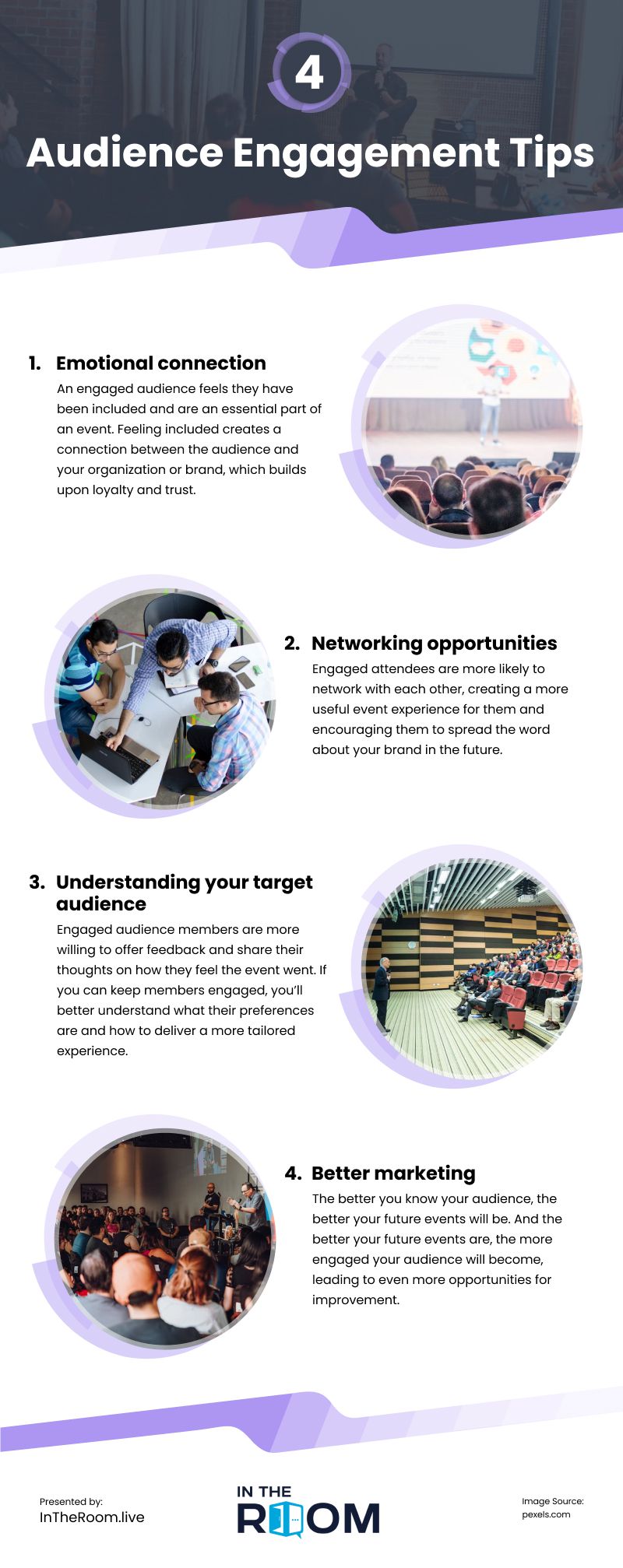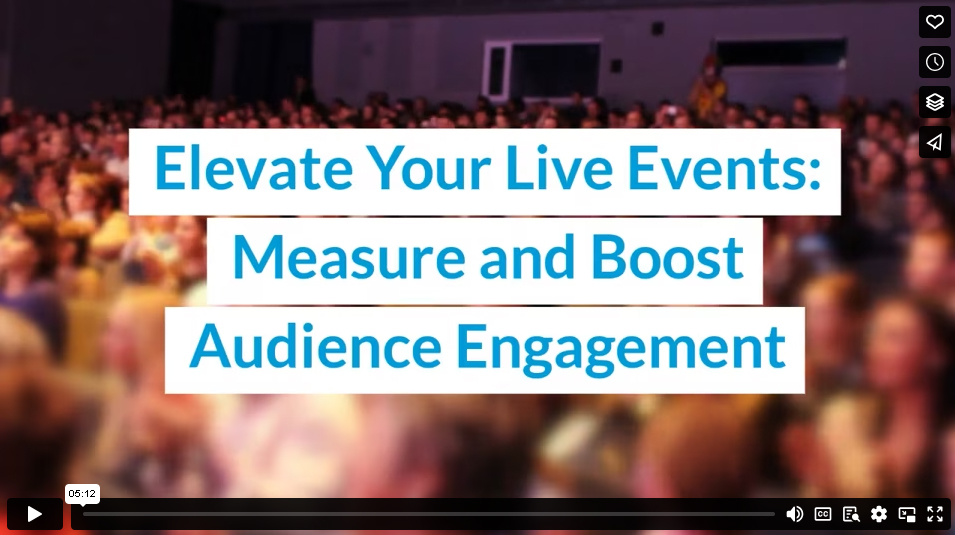Imagine spending hundreds of hours planning the perfect live event for your organization, and then right from the beginning, things fell flat and you couldn’t keep your audiences engaged.
What would it take to turn that same event into a vibrant, interactive experience for your guests? How could you be sure to include engaging session topics, speakers, and user-friendly sign-ups, check-ins, and communications?
Creating an engaging event starts with pre-event planning and smart live event solutions, and extends to post-event follow up communication. Follow along with our expert guide below to ensure your next event is effective from start to finish.
To Start: What Does Audience Engagement Mean and Why Is It Important?
Audience engagement refers to the attention, participation, and connection an audience feels with an event. Audience engagement is almost always included as a key performance indicator (KPI) when measuring success. If an event kept its audience engaged and excited for more, you can expect that the event was successful. If not, it may be time to work on boosting that engagement.
Prioritizing audience engagement is crucial for several reasons:
- Emotional connection. An engaged audience feels they have been included and are an essential part of an event. Feeling included creates a connection between the audience and your organization or brand, which builds upon loyalty and trust.
- Networking opportunities. Engaged attendees are more likely to network with each other, creating a more useful event experience for them and encouraging them to spread the word about your brand in the future.
- Understanding your target audience. Engaged audience members are more willing to offer feedback and share their thoughts on how they feel the event went. If you can keep members engaged, you’ll better understand what their preferences are and how to deliver a more tailored experience.
- Better marketing. The better you know your audience, the better your future events will be. And the better your future events are, the more engaged your audience will become, leading to even more opportunities for improvement.
How Do I Create an Engaged Audience?
Creating engagement begins while you’re in the beginning stages of planning your event, and it really never ends. Your post-event tasks are all meant to help the planning process for your organization’s next live event. It is important to foster engagement before, during, and after any event.
Before The Event
Before your event even begins, you can start to consider audience engagement by using event lead capture software as part of your event registration solution to take a look at the demographics of all registrants. From here, you may be able to adjust your live marketing strategies to attract more members of your target audience and to increase registration numbers.
During this phase, you should use a software program that gives you customizable registration forms to make the process quick and easy for your audiences while also gathering relevant information about them.
Once you’ve started gathering leads, you should send regular email updates highlighting event speakers, new sessions announced, and any other exciting information about the venue, or even food options available. The goal here is to maintain a high number of attendees and to avoid losing guests due to a loss of interest between registration and check-in.
During The Event
Providing engaging content during your event is absolutely essential for event success. One way to do this is to impress your audience with a lightning-fast check-in process. Your event check-in software should get registrants in and out of the check-in line in less than minutes. Make sure to offer one-click upsells so they may easily upgrade their experiences.
Live event sessions and speakers should be tailored to your audience’s preferences, which have been collected and noted during the planning process. Attendees are looking for popular speakers with relevant content and plenty of opportunities for networking.
An excellent way to measure audience engagement is by examining each individual session’s drop-off rate. The drop-off rate is the percentage of guests who entered a session but didn’t stay for the entirety. A session with a low drop-off rate generally indicates high engagement.
After The Event
Once your organization’s event is over, it’s time to send out post-event surveys. This step is vital in measuring audience engagement. You can hear each attendee’s thoughts on sessions and speakers, as well as any other details your audience chooses to share.
Once you have gathered all of this information, you will be able to optimize your next event for the best audience engagement. Sharing social media posts and sending out emails regarding past and future events will help to increase repeat guest attendance.
Improving Audience Engagement
Increasing and measuring engagement at your events is an ongoing process. The key to sustained success lies in continually evolving your approach to live event planning based on details like audience feedback, check-in numbers compared to registrant numbers, and drop-off rates for each session.
Luckily, when you use the right live event software program like one from In The Room, this will help you measure engagement and improve all future events. Transform your organization’s event into an unforgettable experience for your audience and drive up repeat attendance for the next one.
Video
Infographic
Audience engagement measures an audience’s attention and participation levels during an event. A successful event keeps the audience excited, but low engagement signals a need for improvement. Focusing on engagement is essential for several reasons. Learn more in this infographic.


